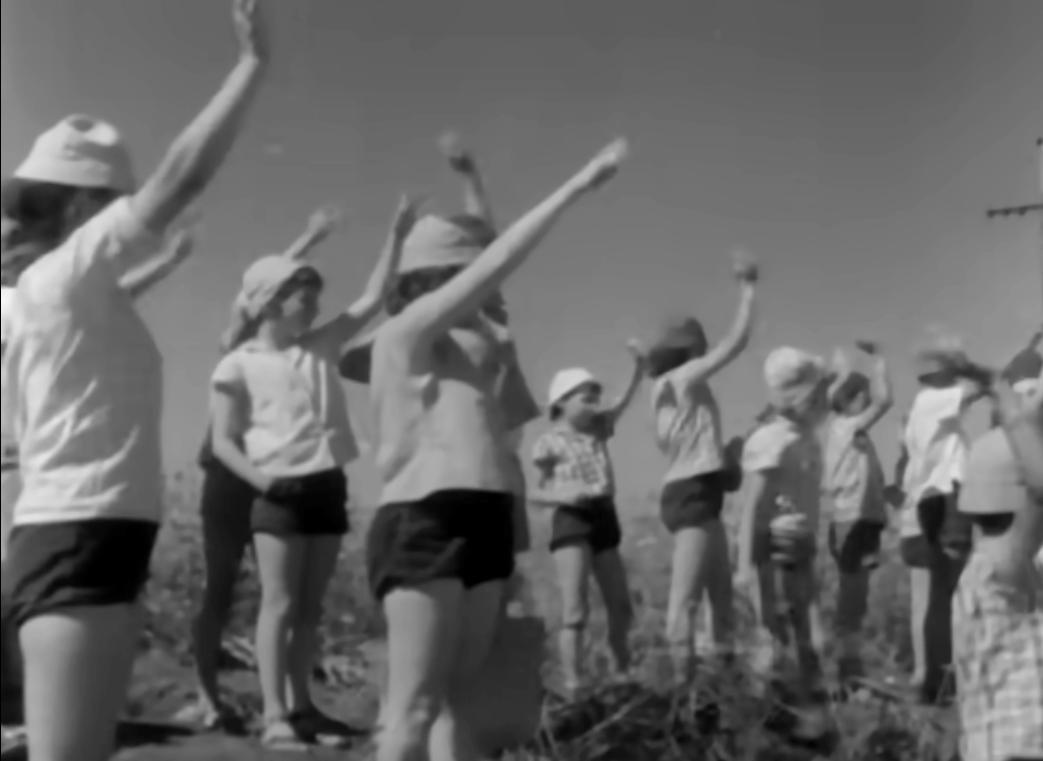
Figure 1.--Here the childre, we think in the belagered Kibbutz Tel Dan. The Kibbutz was attacked by Syrians forces, but managed to hold out. The childtren are chrering the arrival of subsdtantial IDF forces forces to rescue them, we think on May 9. |

|
The Syrian Army totaled some 75,000 men and was mostly deployed south of Damascus on the Israeli border. 【Ehteshami and Hinnebusch, p. 76.】 The primary Syrian border position was the Golan Heights which looms over the flat and vulnerable Israeli lower Galilee below. Here the Syrians dug in with fortified, well designed concrete bunkers. The Syrians had been fortifying the Golan for 18 years, during which hey would shell the Israeli settlements in the Galilee below. Like the Egyptians, the Syrians were the recipient of substantial modern military equipment from the Soviet Union. Equipment that Israel on is own could not match in quality and quantity, especially because they had to focus on the massive Egyptian Army in the south. While he Syrian Army was much smaller than he Egyptian Army, President The Syria dominated by the Ba'ath had been even more confrontational than Nasser. The Syrians were building a canal cut the flow of the Jordan River into he Sea of Galilee which was important to the Israelis. They also for years had been intermittent shelling Israeli civilian settlements in the Galilee (northeaster Israel) from their positions on the Golan Heights. By 1967 they had some 265 artillery pieces on he Golan Heights. In the years and months leading up to the 1967 war, Syria had played a crucial role in raising tensions by engaging in acts of sabotage and incessantly shelling Israeli communities. Syrian Army units disguised as Fatah fighters penetrated into Israel and killed molly Israeli civilians. A subtext here was a struggle between the Syrians and Nasser for control of Fatah and who was he leader of he campaign to destroy Israel. At he time, Gen. Salah Jadid ( صلاح جديد) was the leader of the left-wing bloc of the Syrian Regional Arab Socialist Ba'ath Party, and the de facto leader (1966-70). Hafez al-Assad, he Minister of Defense, would seize power hotly after the War. Syrian aggressiveness was a factor in goading Nasser's belligerence. The Syrian Army was a substantial force in Middle Eastern terms. They were well armed with modern Soviet weaponry. They had a larger force than he Jordanian Army, but poorly trained. The Syrian Army had been weakened by a series of uprisings, coups and counter-coups resulting purges which basically fractured the Syrian military establishment. 【Shlaim and Louis, pp. 86–87 】 Both Jordon and Syria were expecting The Egyptians to do most of the fighting. Syria to support the Egyptians and Jordanians began a concentrated shelling Israeli settlements from the Golan Heights, but did not initiate offensive operations except for a small-scale attack on Kibbutz Tel Dan. On the fourth day of the War (June 8). Syria accepted a UN cease-fire and there was a brief cessation of the Syrian shelling. The War could have ended there with Syria still in possession of the Golan. Syrian state radio, however, then announced that Syria was not bound by the U.N. negotiated cease-fire. The Syrian shelling resumed. Why the Syrians had a change of heart is unknown. And given the defeats suffered by he Egyptians, it bordered on insanity. Apparently the Syrians had convinced themselves that their formidable defenses in the Golan had deterred the Israelis. 【Barker, p.90.】 Up until his point, the Israelis were focused mostly on the Egyptians and the Sinai. They were still debating a major action in the north. Here with renewed shelling in he north the issue was settled. Israeli forces were ordered north in force. There were huge convoys and massive traffic jams in Israeli cities, especially Tel Aviv. Dyan ordered Israeli paratroopers to seize the Heights. It was a major undertaking considering the elaborate Syrian defenses. The Isralies had one huge advantage. Mossad had secured detailed plans of the Syrian Golan defenses. In the process, of seizing the Golan, the Israelis also destroyed all Syrian border defenses leaving the road to Damascus wide open to them. For the first time since the 1948 War, the Jewish settlements in the Galilee were free of Syrian shelling.
Barker, A.J. Arab-Israeli Wars.
Ehteshami, Anoushiravan and Raymond A. Hinnebusch. Syria & Iran: Middle Powers in a Penetrated Regional System> (London: Routledge, 1997).
Shlaim, Avi and William Roger Louis. The 1967 Arab–Israeli War: Origins and Consequences. (Cambridge University Press: 2012).
Navigate the Children in History Website:
[Return to Main Six Day War page]
[Return to Main Israel-Palestine page]
[About Us]
[Introduction]
[Biographies]
[Chronology]
[Climatology]
[Clothing]
[Disease and Health]
[Economics]
[Freedom]
[Geography]
[History]
[Human Nature]
[Law]
[Nationalism]
[Presidents]
[Religion]
[Royalty]
[Science]
[Social Class]
[Bibliographies]
[Contributions]
[FAQs]
[Glossaries]
[Images]
[Links]
[Registration]
[Tools]
[Children in History Home]
